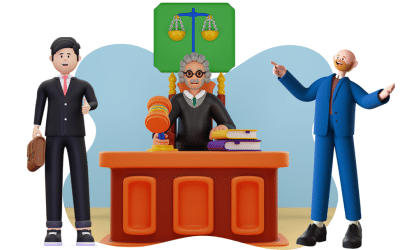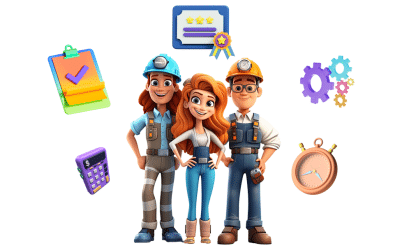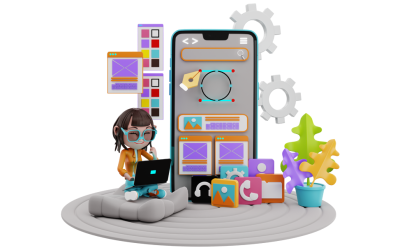Last Update on:
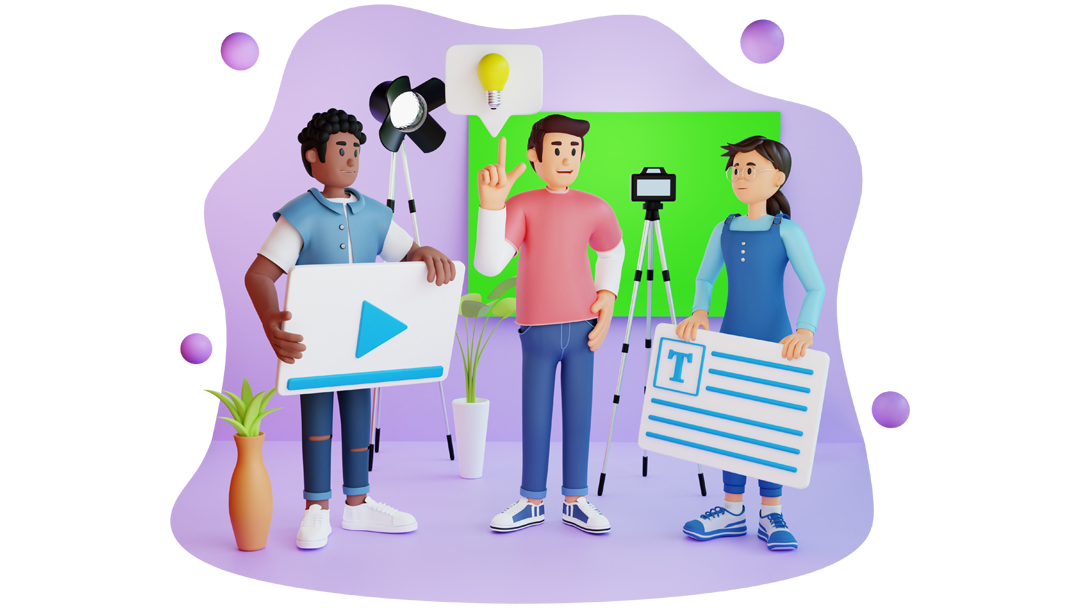
You’ve created a video or podcast series that’s been wildly successful in your French-speaking country, and you think it’d be just as appealing to French speakers in Africa. This is where media localization solutions come in to ensure you can win the hearts of new audiences.
Businesses in today’s globalized world seek ways to broaden their customer base and engage with consumers that come from an array of cultural backgrounds and speak a diversity of languages. When obtaining information, most people prefer to watch or listen to the media rather than read the material. Media localization solutions refer to adjusting media content like movies, TV shows, and podcasts to certain audiences’ linguistic and cultural preferences.
Here we will consider media localization services for content that is not primarily an advertisement or training video. (For advertising and training videos, you can take a look at our ads and marketing localization and training and E-learning solutions, respectively.) The importance of localizing your media offerings will then be discussed. Read on to find out if you’re the type of person who would profit from having their media content localized in the following section. If you’ve arrived at this conclusion, proceed to find out what to look for in a reliable media localization firm.
Table of Contents
- What is media localization?
- Why is media localization important?
- Do I need media localization solutions?
- How do I choose a media localization vendor?
What is media localization?
The practice of adapting audiovisual content generated for audiences in locale A for audiences in locale B is known as media localization. A “locale” is a community of individuals who share a common linguistic and cultural background, whether they live in the same country or another. For example, we have one French language. However, due to cultural and minor linguistic distinctions, there are dozens of locales, including but not limited to France, Quebec, New Brunswick, Algeria, Maghreb, and India.
By taking into account the tastes of the target demographic as well as the legal requirements specific to the target audience’s region, media localization improves the visuals, symbols, and text of original media material. Localizing media aims to give the target audience the idea that the audiovisual content was created with them in mind. You wouldn’t want to spend millions making a documentary and translating it just to have people turn it off in the first few minutes because they were offended by the words you used, which were correct translations but didn’t consider the underlying cultural meanings.
Documentaries, television programs, children’s shows, news broadcasts, movies, and even radio broadcasts and podcasts that are destined for a new community must be localized for the target listeners and viewers to accommodate their linguistic and cultural preferences. It’s not just about translating the text but also about making sure it fits in with local norms regarding language use and cultural references.
Media localization solutions are now fundamental to the success of every modern business. As a result of localizing their content for specific languages and cultures, businesses can expand their worldwide footprint and attract customers in more parts of the world. Media localization aids companies in making sure all of their customers have the same impression of their offerings. Brand awareness, audience satisfaction, and revenue are the ultimate goals of localization, which are achieved through the adaptation to the tastes of a new target demographic.
If your video invites viewers to a website or app, you must localize both the website and the app. Do not make the fatal mistake of successfully drawing an audience with a locally specialized video but then redirecting them to a website or app that is not localized for their region, does not use their language, and overlooks cultural nuances. If you do this, people will quickly leave your website and app and have a bad image of your company.
To localize media, one can do anything from translating the script and on-screen text into different languages to altering the graphics and designs of videos to suit local tastes and preferences better. This process may include the synopsis, product description, metadata, and search engine optimization (SEO).
The localization process involves looking at content from many different perspectives. Before beginning any localization work, it is crucial to determine the text’s orientation. The visual appearance of text, photos, and videos changes drastically when the target language is written right to left rather than left to right. Then, the size of the page or paper and the page layout are the key considerations in localization to avoid a jumble.
Media localization solutions also consider regional regulations and customs. To give just one example, it is against the law in Gulf countries to normalize or depict homosexuality. A perfectly translated video is largely useless if the people speaking in it are dressed inappropriately for the target audience. While you may have intended to expand internationally, a gaffe like this could end up hurting your reputation instead.
Media localization solutions rely heavily on adopting images, diagrams, and other graphics. Different cultures often attribute very different meanings to the same symbols and hand gestures. For instance, the OK sign (formed by curling and linking the index finger and the thumb) in the United States is considered extremely rude in Latin America and may represent zero or worthless in France.
Furthermore, not everyone has the same interpretation of colors. In contrast to its positive connotations in the United States, yellow is commonly associated with jealousy in Germany. Furthermore, in some African countries, people of great social positions wear this color.
Visual aspects of the text, such as fonts and character sets, are also crucial in the media localization process. The visual features of words also include how they are spelled and capitalized. For instance, localization is popular in the United States, whereas localisation is more common in Britain.
Translation is just one component of the media localization process. Throughout the localization process, allusions to the original culture’s myths, rituals, and other characteristics are swapped out for their equivalents in the target culture. Idioms and proverbs are included without explanation or translation but with their correct target counterparts. This is especially the case with media localization solutions due to the limited space for description.
When the intended audience needs to be quickly drawn to and understand the material in media localization, localizing geographical references may also be necessary. Addresses and phone numbers in the source material must also be localized to reflect the format most commonly used in the target audience’s country. In certain regions, the addressee’s name comes first, followed by the rest of the address, and at last, the country name; in others, the country name comes first. Moreover, phone numbers might be written in 2-digit-by-2-digit, 4-digit-by-4-digit, or other forms depending on the nation.
The same applies to time and date. Example: The United States chooses the month/day/year format for dates, whereas most other countries (including Mexico, Africa, Oceania, much of Asia, and most of Europe) use the day/month/year format. However, the year/month/day format is used by several nations. These include Japan, China, North Korea, South Korea, Taiwan, Hungary, Lithuania, and Iran. The Canadian government, however, employs all three, selecting the appropriate mode based on the intended audience. Moreover, as an example of time formats, Germany employs a 24-hour clock, the United Kingdom uses both a 24- and 12-hour clock, and Malaysia uses the 12-hour model.
Don’t forget about the holidays and other significant occasions when localizing. As an illustration, since China uses a lunar calendar, the new year might occur between January 21 and February 20. Rosh Hashanah, the Jewish New Year, also occurs between the 5th of September and the 5th of October. On the other hand, Muharram month, the beginning of the Islamic new year, appears on a different day every year according to the lunar calendar on which it is based.
Another area of concern during media localization services is ensuring compliance with local laws regarding the target nation. Distinct countries have distinct data privacy regulations, and breaking them can result in jail time or significant fines. Copyright issues might also arise from a failure to comply with relevant local laws.
In the same way, media localization solutions are crucial in monetary affairs. Essential factors in media localization include the product’s price, local tax legislation, the preferred payment method of the target demographic, and the measuring units and sizing norms that are more acceptable to that market.
Having a native speaker narrate your video in the language and with the accent of your target demographic is crucial, too. Involving the audience in this way gives them the impression that the speaker is speaking directly to them, as if they were one of their close friends, and engages them with your subject more successfully. Be conscious of whether you are employing a formal or informal tone, as this can be disrespectful depending on the culture and age group you are addressing.
It’s also crucial to make sure the conventions of naming order are adapted to the local culture to avoid any confusion. In contrast to the Western and European custom of recording given names first, then the middle name, and finally the last name, the Japanese practice puts the family name first. However, in Myanmar, both the given name and the surname are always written out in full.
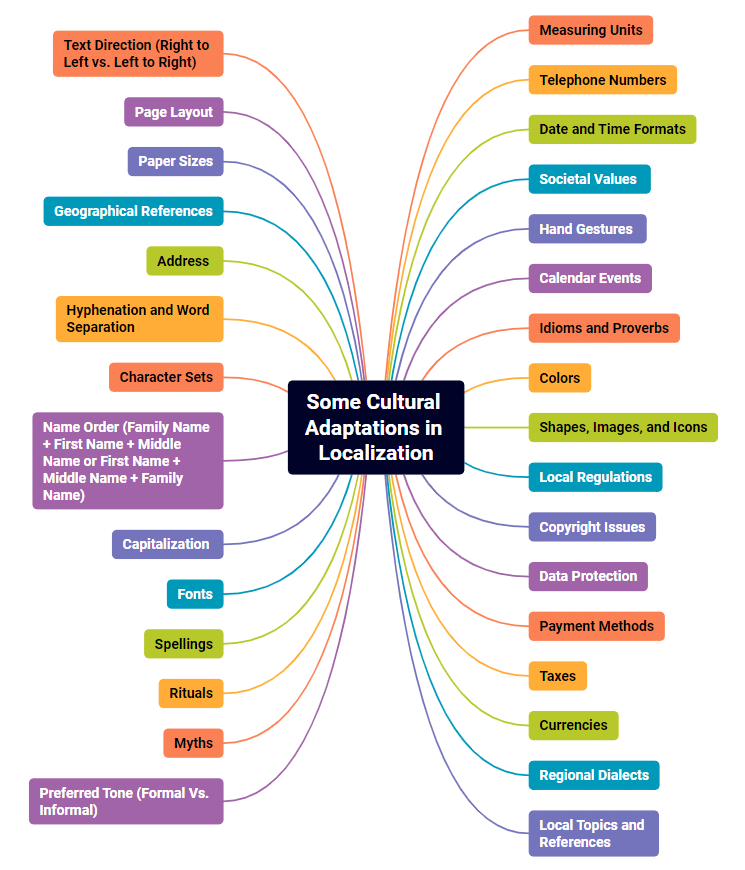
Why is media localization important?
Media localization services are crucial and should not be underestimated. Think about the fact that there are over 7,000 languages spoken globally and that each of the top 100 languages has a minimum of one million speakers. In light of this plethora of languages, producing media exclusively in one or two of them is no longer adequate. Media companies can expand their reach and audience participation by catering to a wide variety of people all around the world.
With the growth of the digital age came a greater need for media localization solutions for multinational organizations. Today, companies can reach their target audience more than ever by creating e-programs for Internet TV channels worldwide. With the help of search engines and social media platforms, they can now make short, entertaining videos to spread the word about their products. Yet they’ll need to be able to interact fluently across linguistic and cultural barriers if they want to succeed.
To succeed in the modern corporate world, media localization is a must. The following are only a few examples of why it’s crucial to localize media:
1. Reaching a wider audience:
You can expand your audience beyond those who already know the language and culture of the source material. Your company’s reach and potential customer base can both expand with this strategy.
2. Improving customer experience:
Localizing your content improves the user experience by making it understandable and relevant to your intended audience. A TV show that is widely popular and hilarious in one country may be deemed insulting in another. For instance, the humor in American sitcoms like “Friends” and “The Office” may not translate well to Asian markets like Japan and China.
3. Avoiding cultural misunderstandings:
Different cultures have a wide variety of unique traditions, beliefs, and core values. Localized audiovisual content can help you prevent cultural misconceptions that could offend or turn away your audience. It can also ensure businesses that their messages resonate with local viewers.
4. Preserve the original message:
Translation focuses on the words, but localization prioritizes the message and cultural adaptation. There is a risk that the intended message will be lost in translation when dealing with, for instance, a children’s television program.
5. Enhancing reputation:
Showing interest in your audience’s language and culture can do wonders for your brand’s image. Care for your viewers’ emotions and sensibilities, and you’ll strengthen your connection with them and increase the likelihood that they’ll subscribe to your channel.
6. Increasing engagement:
When information is localized, it communicates directly to the target audience in their own language and cultural context, making it more appealing and intriguing to them. More interaction and sales may result from this. According to a Facebook IQ survey, 59% of respondents valued viewing content that was culturally relevant to their country. For example, a video or podcast made just for the Chinese New Year is one way to reach the Chinese market and raise successful brand awareness.
7. Reducing the percentage of censorship:
Translation is often insensitive to the rules and regulations of the society to which it is being delivered. This could lead to last-minute censorships that ruin your TV show’s plot and leave viewers confused about what happened. However, the translation process involved in localization highlights the possibility of censorship of specific scenes and dialogues, allowing you to make an informed choice about whether or not to alter or omit them.
8. Not losing your long-time sponsors:
Don’t risk losing your long-term sponsors, especially if you signed a lucrative contract to use the product placement method to promote the sponsor’s products throughout the series subtly. However, you might not be aware that beer product placement is illegal in several Asian nations.
Do I need media localization solutions?
You’ve created a podcast detailing your time spent playing video games. Specifically, you’d like to attract more African listeners. You need first to determine which games are ideal for African cultures and which game features are of the greatest value to African players. Your podcast would anger the African people if the game you mentioned made fun of one of their cultural practices.
You’re a travel agency with a YouTube channel where you take viewers on adventures throughout the world to increase brand recognition. Maintaining a competitive edge requires reaching out to consumers across language and cultural barriers.
As the show’s producer, you’ve signed a deal with a wine country to do product placement commercials in your TV show. You want to expand your show’s reach across Asia by airing it there. Have you heard that product placement for wines and spirits is illegal in most Asian countries?
The Asian citizens of your country have been the subjects of your most recent documentary series. However, the outcome was entirely unexpected and drove away even your most devoted viewers.
You’re an American TV producer who wants to reach Muslim kids with your programs. Do you understand the complexities of Islamic society? If you make a single mistake, your entire show will be banned in the Muslim countries you intend to target.
You’ve created a documentary news show about Saudi Arabia’s royal family. Your show has been warned not to make fun of the Kingdom. How can you be certain that you are following the rule?
You are the marketing manager for a company that uses short film or documentary-style content to sell its products or services. You want people of different backgrounds to feel like they can relate to and enjoy your show just as much as anyone else.
You make videos for sharing on social media. One of your regular customers has asked you to make social media videos aimed particularly at people in Africa. How can you safeguard against offending viewers by using idioms, slang, or even simple phrase structure? (Clue: AI translators like Google Translate are not the answer).
You want to air your radio show in India, and it’s about the world’s multiple religions. You need assurance that highlighting one religion’s culture in the country won’t offend others practicing other religions. Furthermore, you should take care that your words and tone do not upset the believers of the religion you are discussing.
You are a web designer tasked with adapting an existing site for a new audience. The website features many videos, and it’s unclear which ones can be translated into other languages simply by adding subtitles or dubbing and which ones would need to be recreated to safeguard against cultural misunderstandings and potential offense.
Localization can be more beneficial to creative media content than translation. These programs aim to provoke emotions, engage people, and entertain them; cultural tastes play an essential role in accomplishing this. Localization is necessary if you have audiovisual content to promote to people of different cultural backgrounds. This is true even if you didn’t recognize yourself in any of the abovementioned situations.
How do I choose a media localization vendor?
In today’s globalized economy, media localization has become a need for companies that want to reach customers in distinct languages and cultures. Picking the best media localization vendor is essential for receiving services tailored to your company’s demands. The quality of your localized material, both in terms of accuracy and cultural appropriateness, as well as its ability to captivate your intended audience, hinges on your choice of a service provider.
Expertise in distinguishing between translation, localization, and transcreation is a sign of a good media localization solutions provider.
Your content may need to be translated, localized, or transcreated. A skilled localization agency can help you determine which method will give you the best results. Furthermore, it must provide you with superb service for your chosen solution.
Read more about the differences between translation, localization, and transcreation.
Finding one that provides many options is crucial when looking for a localization company. As we’ve already said, it doesn’t do much good to localize your media if the website, apps, and software to which you’re inviting viewers aren’t similarly localized.
If a localization company is worth its price, it will hire native translators from the target audience. Native peoples have a more nuanced understanding of cultural awareness and its historical development. They are more sensitive to cultural subtleties and less likely to offend others accidentally.
Only the best localization companies can guarantee you’ll have a dedicated project manager working on your work. If you want help to prevent or fix difficulties that may develop throughout the localization and delivery procedures, you need the assistance of a seasoned project manager. The best media localization services allow clients to tell them about problems or concerns. One way to do this is to ensure the project manager is always reachable.
A skilled localization business will research to learn more about the expansion opportunities in your preferred target community. Learning competitors’ tactics in a similar market helps win over and retain customers. If you want to know what your target demographic wants and needs right now, conducting some market research is vital.
The fact that audiences’ expectations can differ significantly from one country or region to another, or even within a single country, must be considered by any ideal localization solution (especially in countries like India with multiple official languages).
A trustworthy localization service will be familiar with the applicable laws and regulations in the target country. Localizing media content, ads, and marketing strategies relies heavily on this.
Customers are more likely to give you a worse rating if they believe you prioritized other factors over them and supplied poor-quality content.
An experienced media localization service specialist is up-to-date on the latest trends and preferences of the target audiences in the target areas. For instance, which broadcasting platforms do they use the most? What are their preferred devices for watching videos and listening to podcasts? What are their favorite tones, colors, and kinds of pictures?
The finest localization service provider would have extensive experience with your intended target audiences. They have expertise in the language and idioms of your target demographic and can tell you whether they prefer subtitles or dubbings when watching programs like yours.
Find out about how SinceWordsMatter can assist you with localization solutions.
If you work with a professional localization firm, your viewers won’t be able to identify whether the content they’re watching was produced originally in their language or was translated from another language. You should give your readers a sense of authenticity.
A reliable media localization service should be equipped to deal with a wide range of media formats, including but not limited to video, film, audio, and podcasts. To provide excellent service, they should have access to cutting-edge equipment. Synopsis, product descriptions, metadata, and search engine optimization (SEO) can all be fine-tuned by them as well.

Elevate Your Content, Captivate Your Audience:
Let Our Media Localization Experts Unlock Your Global Potential!

